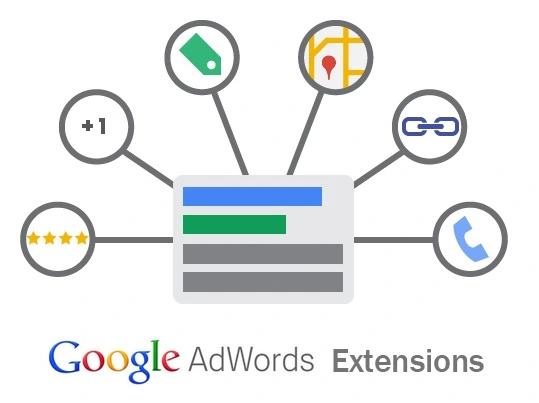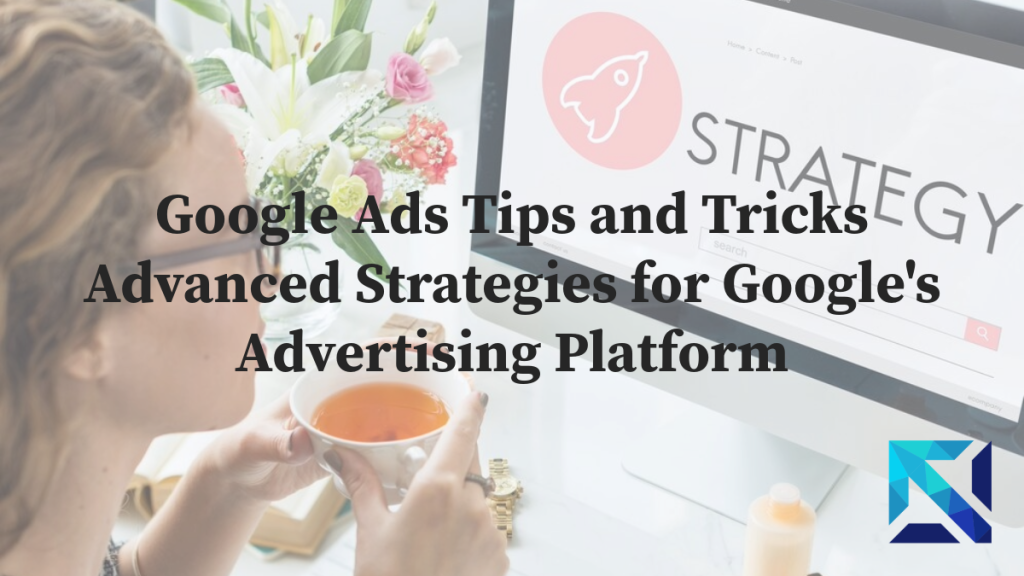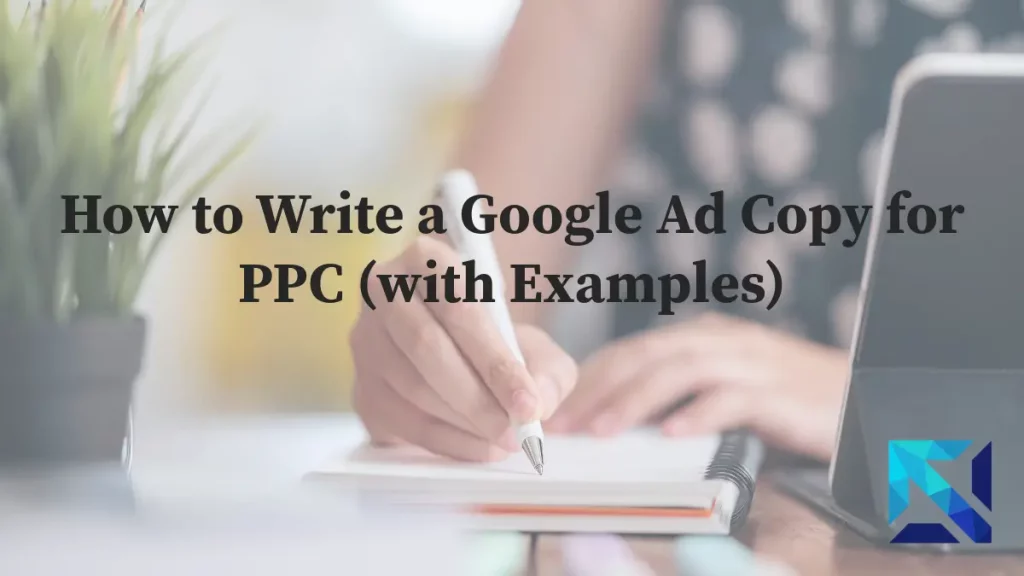Maximizing Your Ad Impact: A Comprehensive Guide to Google Ad Extensions
In the ever-evolving world of digital marketing, staying ahead of the curve is crucial for success. One powerful tool that savvy marketers are leveraging to boost their pay-per-click (PPC) campaigns is Google Ad Extensions. These nifty features can significantly enhance your ads’ visibility, relevance, and overall performance. In this comprehensive guide, we’ll dive deep into the world of Google Ad Extensions, exploring how they can transform your PPC strategy and drive better results for your business.

What Are Google Ad Extensions?
Google Ad Extensions are additional pieces of information that can be added to your standard text ads. These extensions provide extra details about your business, products, or services, giving potential customers more reasons to choose your ad over competitors. By utilizing ad extensions, you’re not just expanding your ad’s real estate on the search engine results page (SERP) – you’re also offering valuable information that can improve your click-through rates (CTR) and overall ad performance.
Why Use Google Ad Extensions?
Before we delve into the various types of ad extensions available, let’s consider why they’re so crucial for your PPC campaigns:
1. Increased Visibility: Extensions make your ads larger and more prominent on the SERP, increasing the likelihood of catching a user’s attention.
2. Improved Click-Through Rates: By providing additional, relevant information, extensions can significantly boost your CTR. Google reports that ads with extensions typically see a 10-15% increase in CTR.
3. Better Ad Rank: Google considers the use of extensions when calculating your Ad Rank, potentially improving your ad’s position on the SERP.
4. Enhanced User Experience: Extensions offer users more ways to interact with your ad, making it easier for them to find the information they’re looking for.
5. Cost-Effective: There’s no additional cost for using extensions (except for call extensions, which may incur charges for phone calls).
Now that we understand the importance of ad extensions, let’s explore the different types available and how to use them effectively.
Types of Google Ad Extensions
1. Sitelink Extensions
Sitelink extensions are perhaps the most common and versatile of all Google Ad Extensions. They allow you to add extra links to your ad, directing users to specific pages on your website.
Example:
Suppose you’re running an ad for a fitness equipment store. Your site links might include:
– Shop Treadmills
– Exercise Bikes
– Free Workout Plans
– Customer Reviews
Best Practice: Use site links to highlight your most popular products, services, or valuable content that might interest potential customers.
2. Callout Extensions
Callout extensions are short, punchy phrases that highlight key selling points or unique features of your business. They’re an excellent way to differentiate yourself from competitors.
Example:
For a local pizza restaurant, callout extensions might include:
– Free Delivery
– Organic Ingredients
– Open Late
– Family-Owned Since 1985
Best Practice: Keep callouts short (25 characters or less) and focus on unique selling propositions that set you apart.
3. Structured Snippet Extensions
Structured snippets allow you to showcase specific aspects of your products or services under predefined headers.
Example:
A hotel might use structured snippets like:
– Amenities: Pool, Gym, Spa, Restaurant
– Room Types: Single, Double, Suite, Penthouse
Best Practice: Choose headers that are most relevant to your business and use them to highlight your range of offerings.
4. Call Extensions
Call extensions add a phone number to your ad, making it easy for potential customers to contact you directly. On mobile devices, this appears as a clickable “Call” button.
Example:
A local plumbing service might use a call extension to display their emergency hotline number.
Best Practice: Use call extensions if phone calls are a valuable lead source for your business. Consider using call tracking to measure the effectiveness of these calls.
5. Location Extensions
Location extensions display your business address alongside your ad. They’re particularly useful for businesses with physical locations or those targeting local customers.
Example:
A chain of coffee shops might use location extensions to show the nearest store to the user.
Best Practice: Ensure your Google My Business account is up-to-date and linked to your Google Ads account for accurate location information.
6. Price Extensions
Price extensions allow you to showcase your products or services along with their prices directly in your ad.
Example:
An online course provider might use price extensions to display different course packages:
– Beginner Course: $99
– Advanced Course: $199
– Full Certification: $499
Best Practice: Use price extensions to highlight competitive pricing or to showcase a range of options at different price points.
7. App Extensions
If your business has a mobile app, app extensions allow users to download it directly from your ad.
Example:
A food delivery service might use an app extension to encourage users to download their mobile ordering app.
Best Practice: Use app extensions if your app provides significant value to customers and is a key part of your business model.
Implementing Google Ad Extensions: Best Practices

Now that we’ve covered the main types of Google Ad Extensions, let’s discuss some best practices for implementing them effectively:
1. Use Multiple Extensions: Don’t limit yourself to just one type of extension. Combine different extensions to provide a comprehensive ad experience.
2. Keep It Relevant: Ensure that your extensions are directly related to the ad content and landing page. Irrelevant extensions can lead to poor user experience and lower Quality Scores.
3. Test and Optimize: Regularly review the performance of your extensions. A/B tests different versions to see which ones resonate best with your audience.
4. Mobile Optimization: With the increasing prevalence of mobile searches, ensure your extensions are optimized for mobile devices.
5. Rotate Extensions: Create multiple versions of each extension type and let Google rotate them to find the best performers.
6. Stay Up-to-Date: Google frequently introduces new extension types and features. Stay informed about these changes and adapt your strategy accordingly.
Measuring the Success of Your Ad Extensions
To truly maximize the impact of your Google Ad Extensions, it’s crucial to measure their performance. Here are some key metrics to monitor:
– Click-Through Rate (CTR): Compare the CTR of ads with extensions to those without.
– Conversion Rate: Analyze how extensions affect your overall conversion rate.
– Cost Per Click (CPC): Monitor if extensions are impacting your CPC.
– Ad Position: Track how extensions influence your ad’s position on the SERP.
– Quality Score: Keep an eye on how extensions affect your Quality Score over time.
Common Pitfalls to Avoid
While Google Ad Extensions offer numerous benefits, there are some common mistakes to watch out for:
1. Overloading Your Ad: While it’s good to use multiple extensions, don’t try to cram every possible extension into a single ad. Focus on the most relevant and impactful ones.
2. Neglecting Mobile Users: Ensure your extensions are optimized for mobile devices, where screen real estate is limited.
3. Ignoring Performance Data: Regularly review and adjust your extensions based on performance metrics.
4. Duplicating Information: Avoid repeating the same information across different extension types or in your main ad copy.
5. Set and Forget: Don’t just set up your extensions and forget about them. They require ongoing management and optimization.
The Future of Google Ad Extensions
As PPC advertising continues to evolve, we can expect Google to introduce new types of ad extensions and enhance existing ones. Some potential developments to watch for include:
– More Interactive Extensions: We might see extensions that allow for greater user interaction directly from the SERP.
– AI-Driven Extensions: Google may leverage AI to automatically generate and optimize extensions based on user behavior and ad performance.
– Video Extensions: With the growing popularity of video content, Google might introduce extensions that incorporate short video clips.
Conclusion
Google Ad Extensions are a powerful tool in any PPC marketer’s arsenal. By providing additional, relevant information to potential customers, they can significantly boost the performance of your ads. From improving click-through rates to enhancing ad visibility, the benefits of ad extensions are clear.
Remember, the key to success with Google Ad Extensions lies in relevance, testing, and continuous optimization. By following the best practices outlined in this guide and staying attuned to the latest developments in PPC advertising, you can leverage ad extensions to take your Google Ads campaigns to new heights.
So, don’t wait – start experimenting with different types of ad extensions today and watch your PPC performance soar!
1. How do Google Ad Extensions impact Quality Score and Ad Rank?
Google Ad Extensions play a crucial role in improving both your Quality Score and Ad Rank. By providing additional, relevant information to users, extensions can increase your ad's click-through rate (CTR), which is a key factor in determining Quality Score. A higher Quality Score, in turn, can lead to a better Ad Rank, potentially resulting in improved ad positions and lower costs per click. Moreover, Google explicitly considers the expected impact of ad extensions when calculating Ad Rank, giving ads with extensions a competitive edge.
2. What's the difference between Google Ad Extensions and expanded text ads?
While both Google Ad Extensions and expanded text ads aim to provide more information to users, they serve different purposes. Expanded text ads are the primary ad format, allowing for longer headlines and descriptions. Google Ad Extensions, on the other hand, are additional elements that complement your main ad text. Extensions like site links, callouts, and structured snippets provide extra details about your business, products, or services without using up your main ad space. Using both expanded text ads and ad extensions together can create a more comprehensive and engaging ad experience for potential customers.
3. Can I use multiple Google Ad Extensions on a single ad? How many is too many?
Yes, you can and should use multiple Google Ad Extensions on a single ad. In fact, using a combination of different extension types can significantly enhance your ad's performance. However, it's important to strike a balance. While there's no strict limit on the number of extensions you can add to an ad group or campaign, Google will only show a selection of extensions with each ad impression based on relevance and expected impact on performance. Focus on using 3-5 highly relevant extension types for each ad group, ensuring that each extension adds unique value to your ad.
4. Are Google Ad Extensions free? How do they affect my PPC budget?
Most Google Ad Extensions are free to add to your ads. You won't be charged extra for clicks on sitelinks, callouts, structured snippets, or other standard extensions. However, some interactions with extensions may incur charges. For example, clicks on call extensions (phone calls) or location extensions (directions) may be charged similarly to a regular ad click. It's important to note that while extensions themselves don't directly increase your PPC budget, they can impact your overall campaign performance. By improving your CTR and Quality Score, extensions may help lower your cost per click and allow your budget to stretch further.
5. How can I track the performance of my Google Ad Extensions? Which metrics matter most?
Tracking the performance of your Google Ad Extensions is crucial for optimizing your PPC campaigns. In Google Ads, you can view extension-specific metrics by segmenting your data by "Click Type" in the ad extensions tab. Key metrics to monitor include:
- Click-through rate (CTR) for each extension type
- Conversion rate from extension clicks
- Cost per click (CPC) for extension interactions
- Impression share for your extensions
Pay special attention to how different extensions impact your overall ad performance. Look for extensions that drive high CTRs and conversion rates while maintaining a reasonable CPC. Regularly reviewing these metrics will help you refine your extension strategy and maximize the impact of your Google Ads campaigns.




